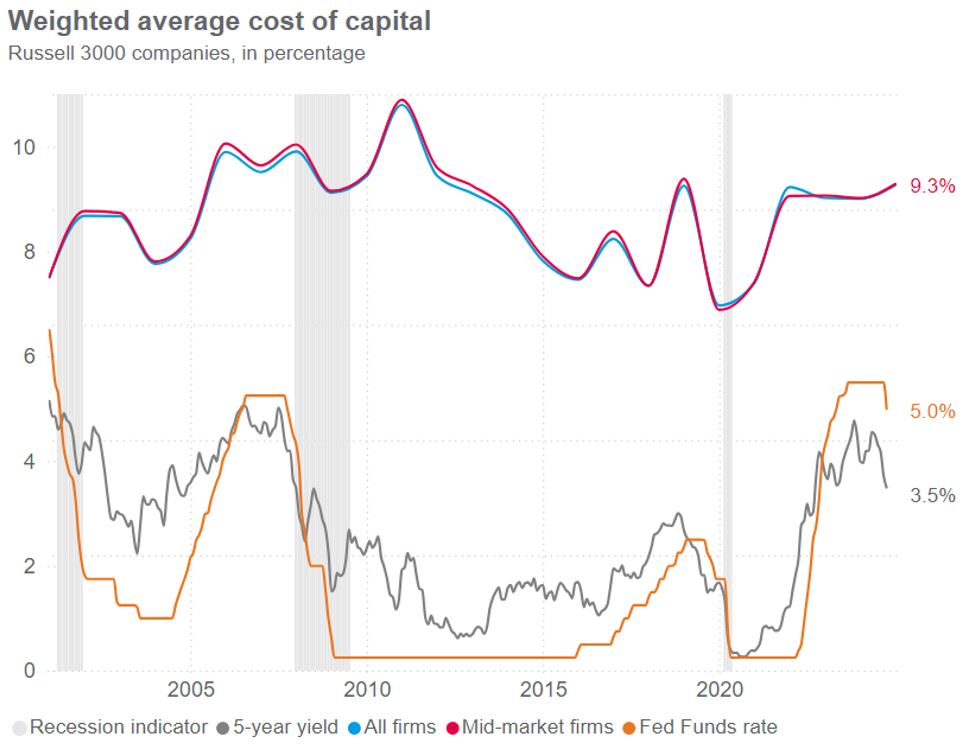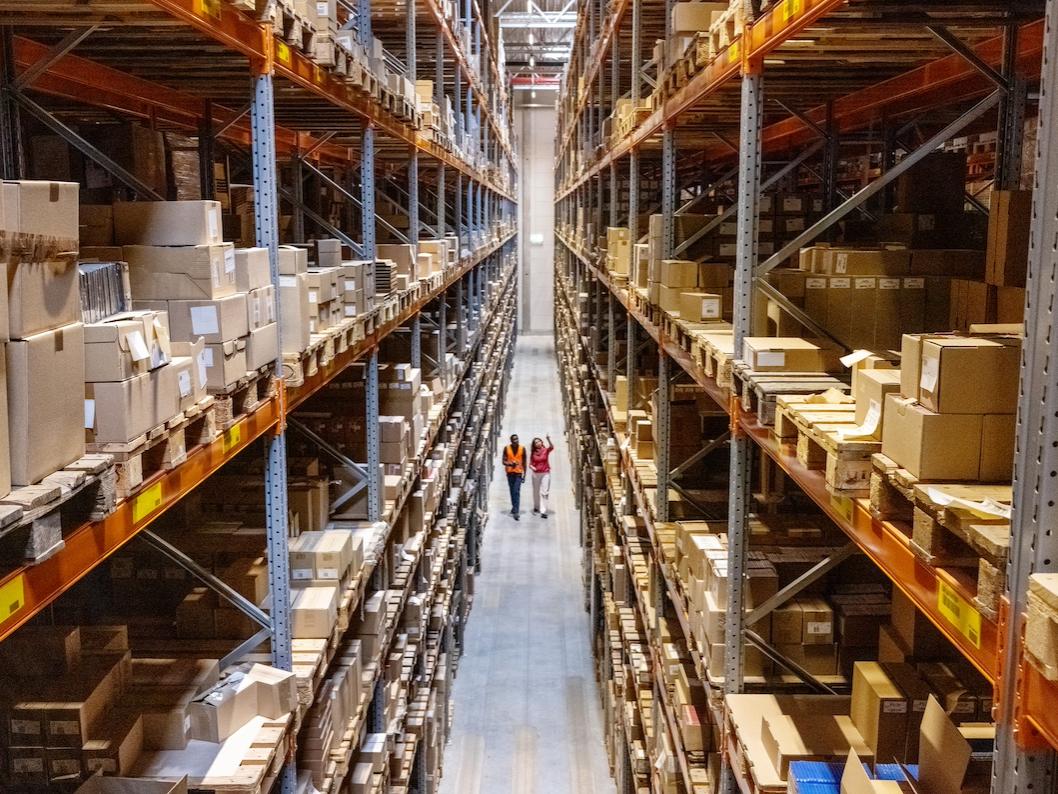


The era of low interest rates has officially ended, significantly impacting business models across the United States. Firms are now required to adapt to a higher cost of capital, with the weighted average cost of capital increasing by approximately 31% since 2020. This shift is particularly pronounced among firms in the Russell 3000, which includes those with revenues between $1 billion and $10 billion. The Federal Reserve's anticipated rate cuts will play a crucial role in influencing fixed business investment and hiring decisions moving forward. [7c80631b]
In this new economic landscape, risk aversion has become prevalent among investors, with an estimated $17.7 trillion currently sitting in banks. Industries that are sensitive to interest rates, such as technology and financial services, are expected to benefit as rates begin to ease. However, small and medium-sized firms face a pressing need to make productivity-enhancing investments to remain competitive in this environment. [7c80631b]
As companies navigate these changes, the focus will shift back to optimizing operations rather than engaging in financial engineering. This adjustment mirrors conditions seen prior to the financial crisis, requiring managers to develop robust capital allocation skills to maximize shareholder value. [7c80631b]
In addition to these broader economic shifts, higher interest rates have a significant impact on companies of all sizes, particularly regarding their ability to invest in innovation. Smaller firms are especially vulnerable, as they typically have less capital stock and reserves compared to larger companies. In uncertain economic conditions, larger firms tend to perform better and have more protective measures in place, whereas small companies struggle. The high interest rates may lead to increased mergers and acquisitions, as larger companies look to acquire struggling smaller firms. However, the overall M&A activity has slowed due to the high interest rates, and the outlook remains cautious. [ea5bff80]
Moreover, research indicates that higher interest rates can deter companies from investing in technology and innovation, which can slow the pace of innovation and ultimately limit economic growth. Studies show that for every 1 percentage point rise in interest rates, research and development spending can fall by between 1 and 3 percent, while venture capital investment may decrease by about 25 percent within one to three years post-hike. Furthermore, patent filings and innovation can decline by 9 percent within four years of an interest-rate increase, leading to a potential overall economic output reduction of 1 percent. [af8ae5cb]
Interestingly, U.S. firms that are more innovative are more likely to engage in exports, as highlighted by a study from Penn State researchers. This research underscores the importance of fostering innovation, particularly in rural areas, to enhance export activity among firms. [af8ae5cb]